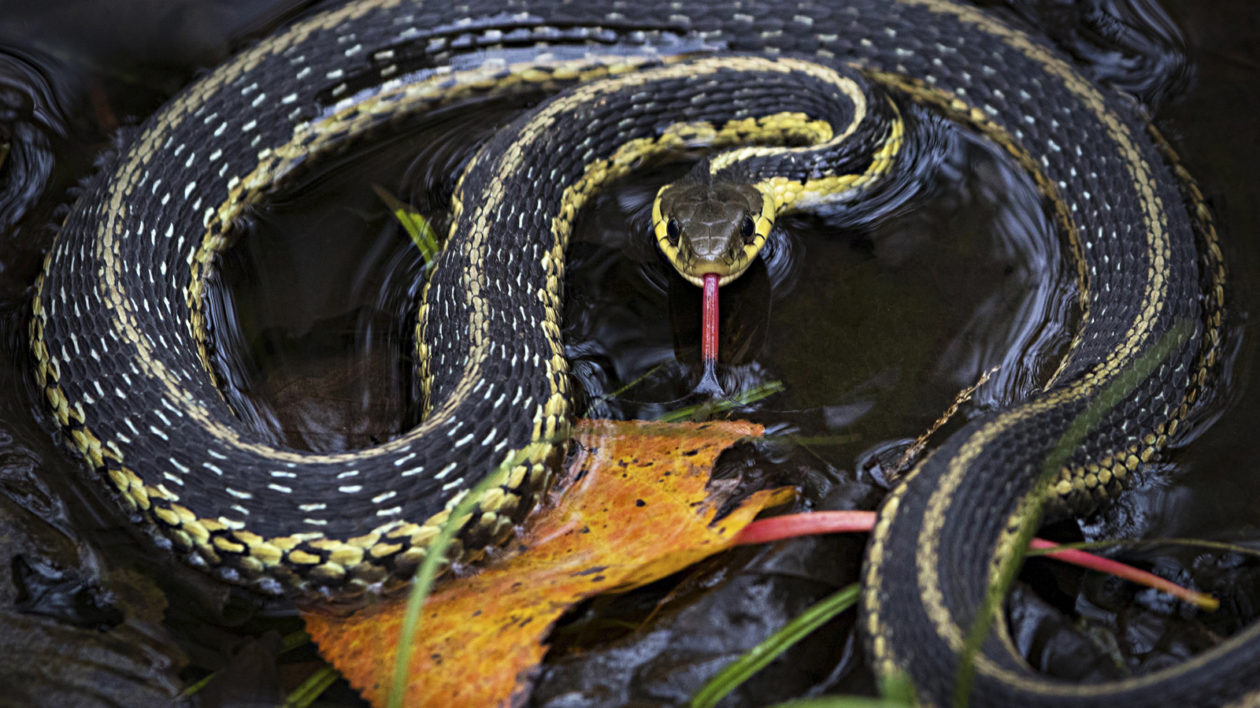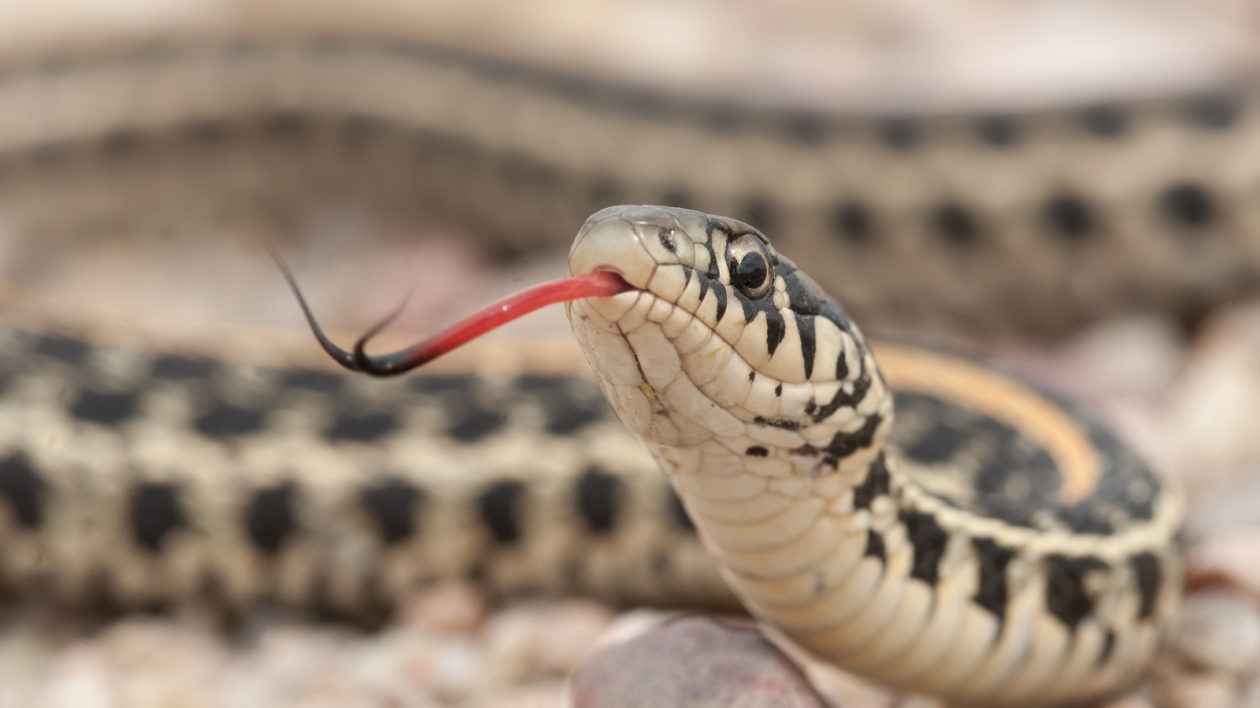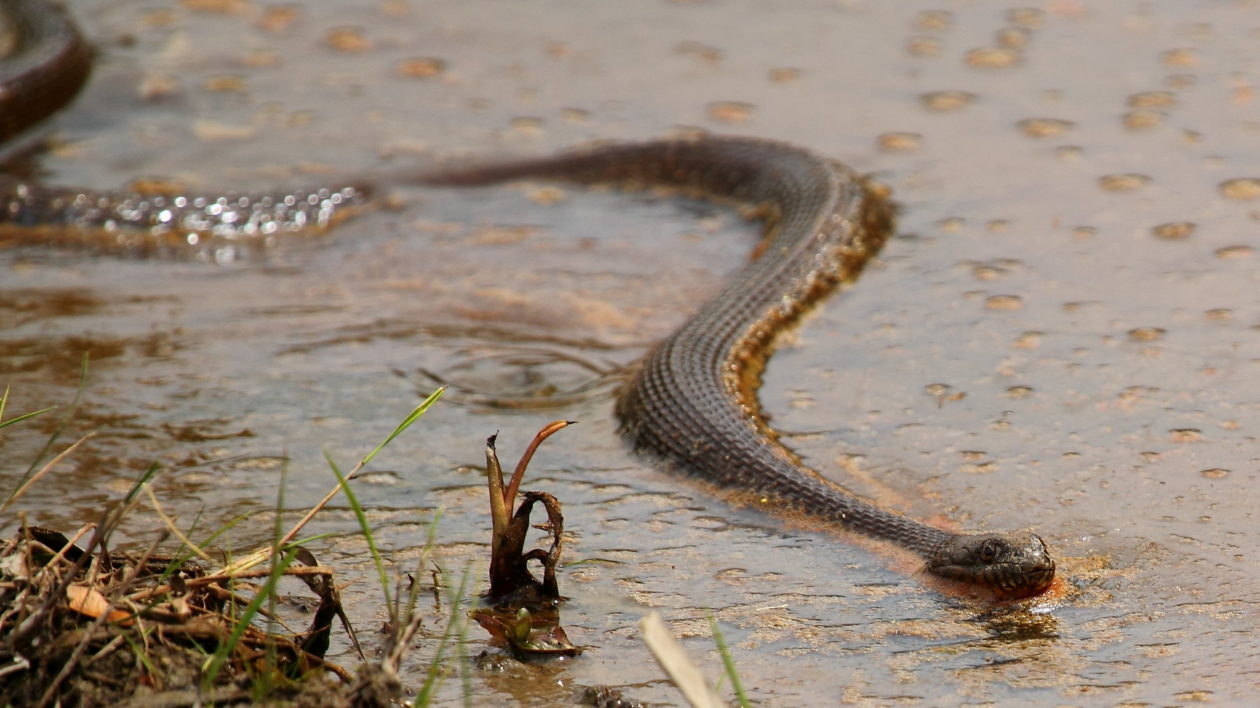A lot of what you know about snakes is probably wrong.
You’re not alone. In fact, I recall a dream trip to the Amazon Basin when our group came upon a snake on a night hike. “Red on black, friend of Jack,” I said, repeating a snake-safety rule I learned in school. Every member of our varied group, including the guide, nodded in approval. It’s lucky I wasn’t inclined to pick up the snake, as I might have received a very nasty surprise.
It turns out the “Red on yellow, red on black” rule we all learned only works for some snakes, some of the time. Which means this adage is basically worthless for snake identification.
Fortunately, wildlife biologist and science communicator David Steen has taken the most common snake myths, tall tales and snake safety rules and applied real science to them in his wildly entertaining Secrets of Snakes: The Science Beyond the Myths (Texas A&M University Press). Many of the myths in here you have likely heard, repeatedly. You likely have never questioned them. But Steen breaks down each myth, each story, in a breezy yet informative manner. It is hard to imagine a nature book being more fun.

As a wildlife biologist, Steen didn’t set out to be a science communicator. He simply had a lifelong love of poking around swamps, and a curiosity about the creatures around him. A side gig writing a nature column for a newspaper turned into a blog, Living Alongside Wildlife, that often addressed his favorite topic: snakes.
No one is neutral about snakes. They’re one of the most recognizable creatures, regardless of geography. They have appeared as central characters in our stories pretty much from the time we started telling stories. Snake tales get passed from one generation to the next. But folklore and legend are not science.
As Steen blogged and became a popular biologist on Twitter, he encountered repeated requests for snake identification. He heard outlandish stories highly unlikely to be true. He saw the same folklore repeated as established fact. And he began sharing what the science actually showed.
I believe Steen’s interactions on social media help make this book so readable and relevant. He writes for his audience’s needs, a lesson that unfortunately even many self-proclaimed science communicators never learn. He knows the most common snake myths because he’s heard them hundreds if not thousands of times. He also knows how passionately people will defend their snake anecdotes.

Secrets of Snakes is organized by common questions Steen has heard about snakes. Can you tell if a snake is venomous by the shape of its head, or of its pupils? Will cottonmouths chase you down or hop into your boat? Can you tell how old a rattlesnake is by the number of rattles? You may well think you know the answers to all these questions, but Steen shows what the best evidence suggests.
He does not dismiss wild anecdotes outright but explains his approach:
“I generally do not frame conversations on snake myths to suggest whether something is possible or not but on whether something is consistent with what we know about the world or inconsistent with what we know. If you want me to believe something that is inconsistent with what we know about the world, then I will require evidence.”
Evidence, as I’ve written previously on this blog, is not a story of a ten-foot rattlesnake told by a slightly inebriated guy at the bar. No matter what your opinion on snakes, it’s hard to argue with Steen’s breakdown of what the evidence actually says, whether on snake size or aggressiveness or mating habits.
Local wildlife – the creatures that share our backyards and city parks – are of extremely high interest to readers of this blog. While The Nature Conservancy works on complex global issues, the top stories of Cool Green Science are consistently about bird feeding, suburban wildlife conflict and common creatures like deer and earthworms.

Familiarity may not always breed contempt, but is seemingly can breed a false sense of knowledge. A lot of our wildlife myths are about creatures that we believe we know. As Steen writes, “I don’t believe a lot of stories I hear about wildlife. And sometimes that upsets people.”
But I find it heartening that people do care about local wildlife and want to know more. By providing readable information, writers like Steen can not only improve our knowledge, but also show how we can better conserve creatures like snakes. And anyone can be a citizen scientist, recording the behaviors they see. Steen notes several examples where his social media followers and readers photographed and published never-before-documented snake behaviors.
Still, you will not read in this book any stories about cottonmouths that decide to attack a boatload of anglers just because the snake’s in a bad mood. The reality of snakes, though, is infinitely more fascinating than the tall tales. No matter your opinion on snakes, you’ll have a new appreciation for what we know – and what we don’t. And you’ll probably have some of your own outdated beliefs punctured. Rather than repeating misinformation, you’ll find yourself returning to this little volume again and again, sharing new snake stories with your friends and family.




ALL snakes are good for the environment and ALL snakes should be respected and not killed…I realized many years ago that ALL snakes are good for the environment. I have personally picked up rattlesnakes and copperheads without injury (very carefully) I might add…!!!…